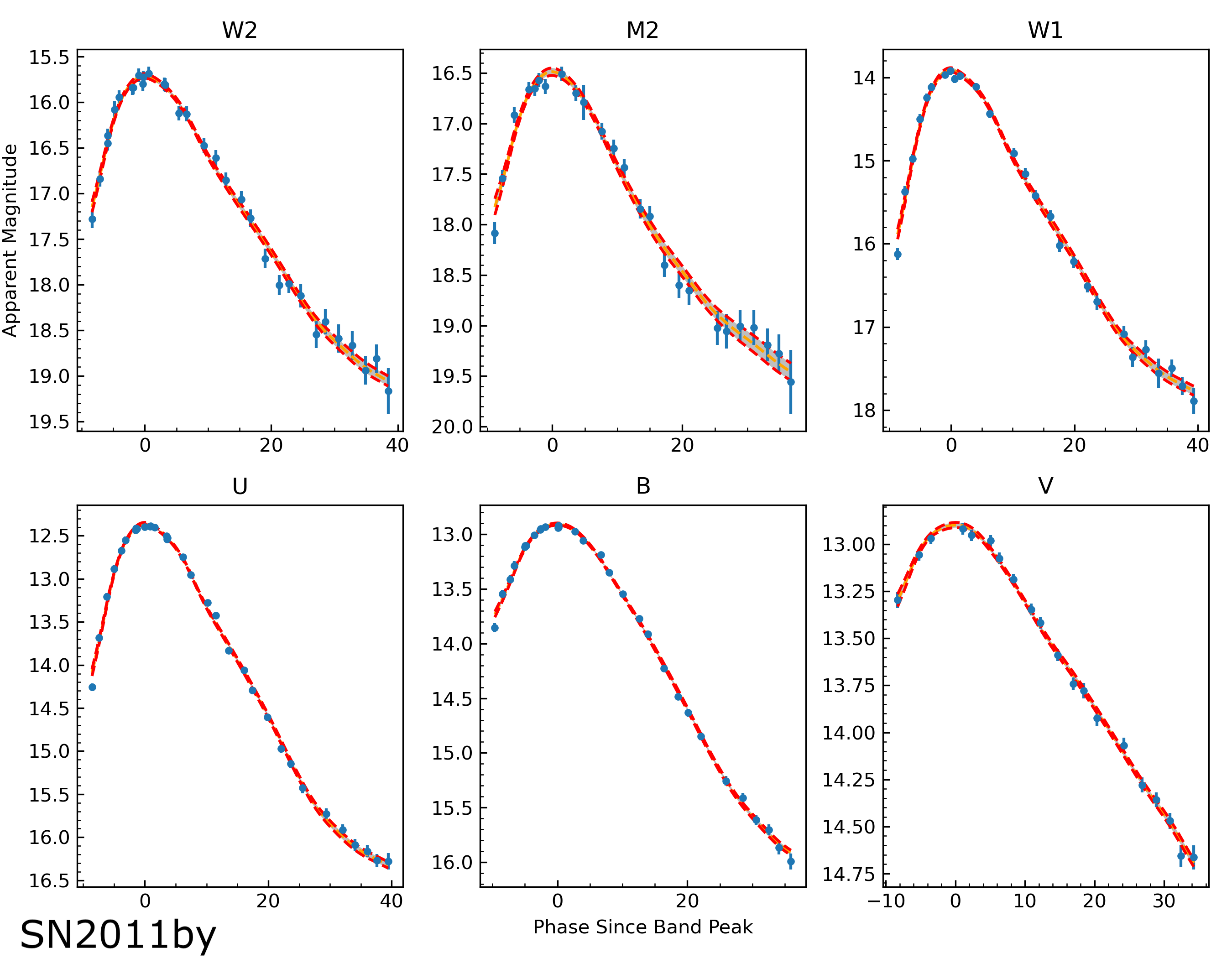Yaswant Devarakonda
Type Ia Supernovae in the Ultra-Violet
Currently I am collaborating with Dr. Peter Brown and Dr. Nicholas Suntzeff at Texas A&M, studying Type Ia Supernovae (SNe Ia) in the UV. SNe Ia are known to have very similar light-curve profiles in the optical, which makes them very useful as distance indicators. At higher redshifts, their rest-frame UV emission will be shifted into the optical, thus having a good understanding of their UV properties will allow us to expand our distance estimates. In our first paper we analyzed nearby SNe Ia in the optical and the UV with SWIFT and found that the UV light curves displayed statistically similar diversity to the optical light curves. In our current project, we have created SED models of SNe Ia in the UV and optical, which can be used to provide more accurate estimates of their intrinsic luminosity.
Previous Work
As a graduate student, I worked with Dr. Jonelle Walsh on the Gemini Large and Long Program, analyzing stellar kinematics in nearby galaxies to constrain the masses of the super-massive black holes (SMBH) in the center of them. As an undergraduate, I worked on a variety of projects. For the majority of my time, I worked with the HETDEX collaboration, searching for Lyman-Alpha emitters at high redshift. The goal was to study how star formation in galaxies changed as a function of redshift. We also aimed to analyze the 3D structure of the universe to find evidence of baryonic acoustic oscillations, which could give us a better understanding of the role dark energy played in the evolution of the universe. I also studied gravitationally lensed LAEs to better understand the characteristics of faint, high-redshift galaxies, and to build a better understanding of the dark matter content of foreground clusters. Finally, I worked as an intern at Nanohmics inc. to develop the technology to find exoplanets via stellar echo imaging.
